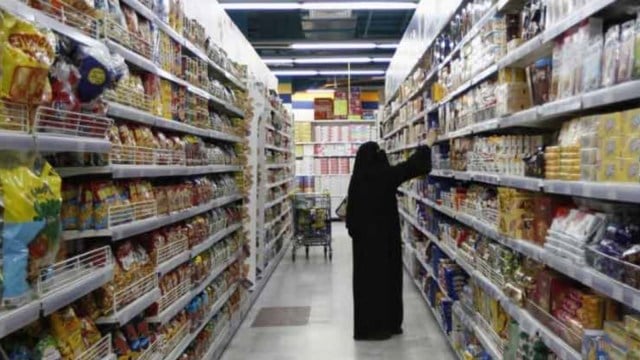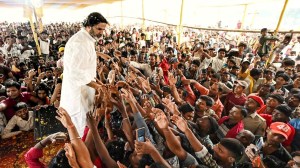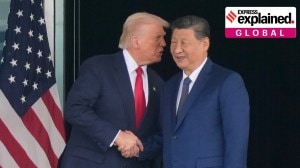The Netherlands-based Louis Dreyfus Company (LDC) is one of the world’s largest agricultural commodities traders, with a significant presence in India. The company’s operations in the country include trading in grains, oil seeds, cotton, sugar, and rice. Additionally, LDC has a coffee milling facility in Kushalnagar, Karnataka, and an edible oil refinery in Kandla, Gujarat.
In an interview with Aggam Walia, Rubens Marques, Head of South and Southeast Asia at LDC, shares his insights on the rapidly evolving landscape of agricultural trade. He discusses the impact of climate change and geopolitical volatility on global agricultural markets and the importance of making agriculture an attractive profession for the next generation of farmers. Edited excerpts:

Agricultural production and trading is becoming increasingly volatile. What are some of the key drivers behind this trend?
What we’ve been observing in the last few years is that because of climate change disruptions, but also geopolitical events, we’re seeing a lot of volatility in the market. We do see weather events becoming more unpredictable. We will always have good years and bad years, it’s a part of our business. But what we are observing is that these events are becoming more difficult to predict. When you look at our role in trading, we basically help solve supply and demand imbalances. If you’re able to predict what the weather is going to be like, you do your crop forecasting, your supply and demand forecasting, then our job becomes a bit easier.
Story continues below this ad
We also see an escalation in a lot of geopolitical tensions and countries are focusing a little bit more on their own food and fuel insecurity. I think that’s a hot topic in India, but you can see that across a lot of the countries where we’re present. This is leading to fragmentation of trade, which is here to stay. In a globalised world, moving commodities from one place where you have a surplus to places where you need it should function very well.
If India has an exportable surplus of rice, you are going to export that to countries where you don’t have enough of it. But because you have countries looking a little bit more inwards and focusing on food or fuel security, that basically disrupts how the trade should normally work. When I talk about fragmentation of trade, what it means is deglobalisation.
As a global agricultural commodities trader, how do you plan to adapt to fragmentation of trade?
The fragmentation of trade is reshaping the industry and also driving some of our strategic initiatives– you need to start becoming more of a domestic player. You need to start looking at opportunities, especially in key countries like India.
To facilitate those import and export flows, which is still very much our bread and butter, but also build more of a domestic presence, going further downstream, and reaching out more to our customers. That’s what we are doing with our edible oil business in India, through the Vibhor brand.
Story continues below this ad
We aim to double our distribution presence by 2026, especially in northern India. We’re also upgrading facilities, investing in technology, and improving efficiency to ensure competitive pricing in the Indian market, which is very price-sensitive.
Coffee futures have been on the rise lately. What are the factors behind it and what’s the outlook?
The coffee market has been a little bit disconnected. In Brazil, the production was actually okay. But then, you had issues in Vietnam– a part of that was because of El Niño and these weather events. That created a little bit of an imbalance, and because of logistics, you couldn’t really solve that imbalance so easily.
Normally, if you have prices skyrocketing in Asia but have enough coffee in the Americas, then the function of the market is to bring that coffee into Asia. But because of logistic disruptions, the market couldn’t really do that fast enough. On top of that, demand continues to increase. So, it was a double whammy and ended up pushing the prices higher. We do see that prices are stabilising now, with El Niño behind us and the monsoon on track.
In India, there has been increasing emphasis on self-sufficiency in food production. How would you assess the demand-supply dynamics in the domestic market?
When you look at the supply and demand dynamics in India, you don’t have too many imbalances. You have an exportable surplus of coffee and we are a top player in coffee. You have a deficit of vegetable oils and we have about 25 per cent market share of edible oils that come from South America into India. But largely, we do see India as a very well-balanced market and that’s why being a domestic player is so important. We want to continue to grow in India but we cannot rely so much on deficits and surpluses. Because, as I mentioned, India is actually doing a fairly good job at becoming more self-sufficient.
Story continues below this ad
Improving agricultural productivity is seen as a key step towards boosting production and sustainability. How do you see this happen in India?
We partner with people that can bring innovation and new technologies. What we do is gap training by bringing in experts from within India or from other countries to train farmers on how they can achieve more with the same amount of land. The adoption of technology is super important. We’re very concerned about the next generation of farmers in India. The younger population wants to move into the bigger cities and they want to get jobs in tech, let’s say. We’re very concerned. We run our business based on farmers, and we know that it’s in our mission to provide sustenance to a growing population. We can only do that if farmers are there, and they’re happy and successful.
Some of the projects that we have, like a vocational project in Indonesia, for example, are very much focused on how we can retain this next generation of farmers by training them on some of these new technologies, like precision agriculture, drones, having visibility on how their business is performing, etc. You need to make it interesting so that this new generation of farmers will remain in the farms.

































